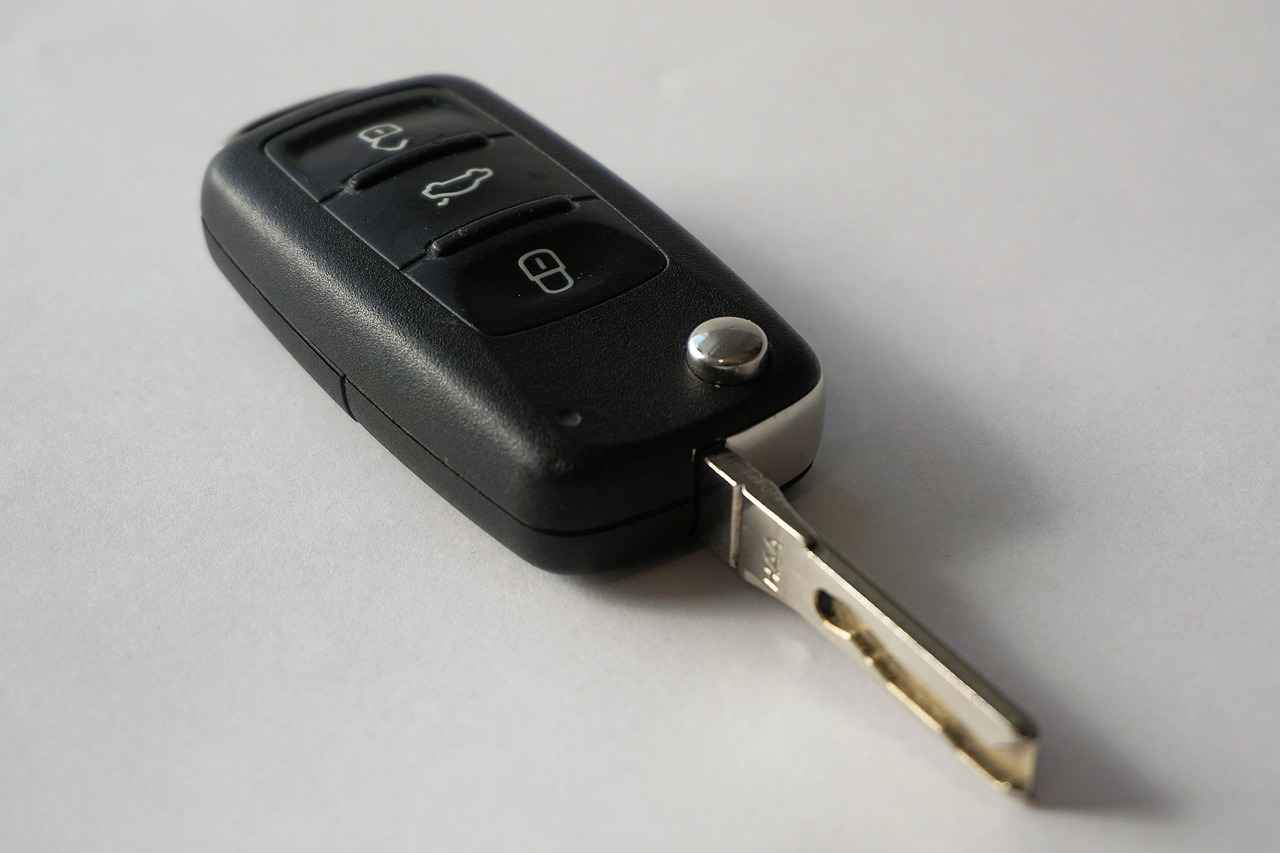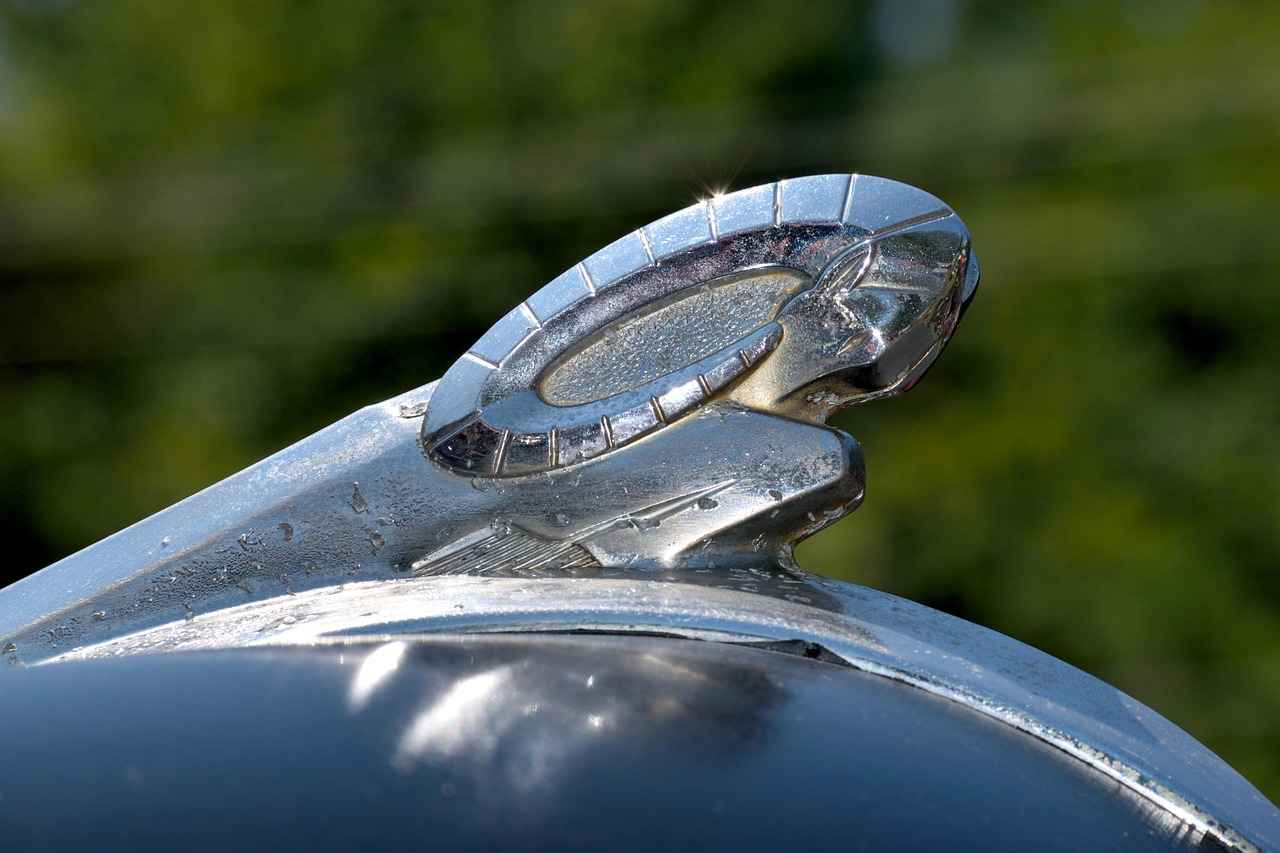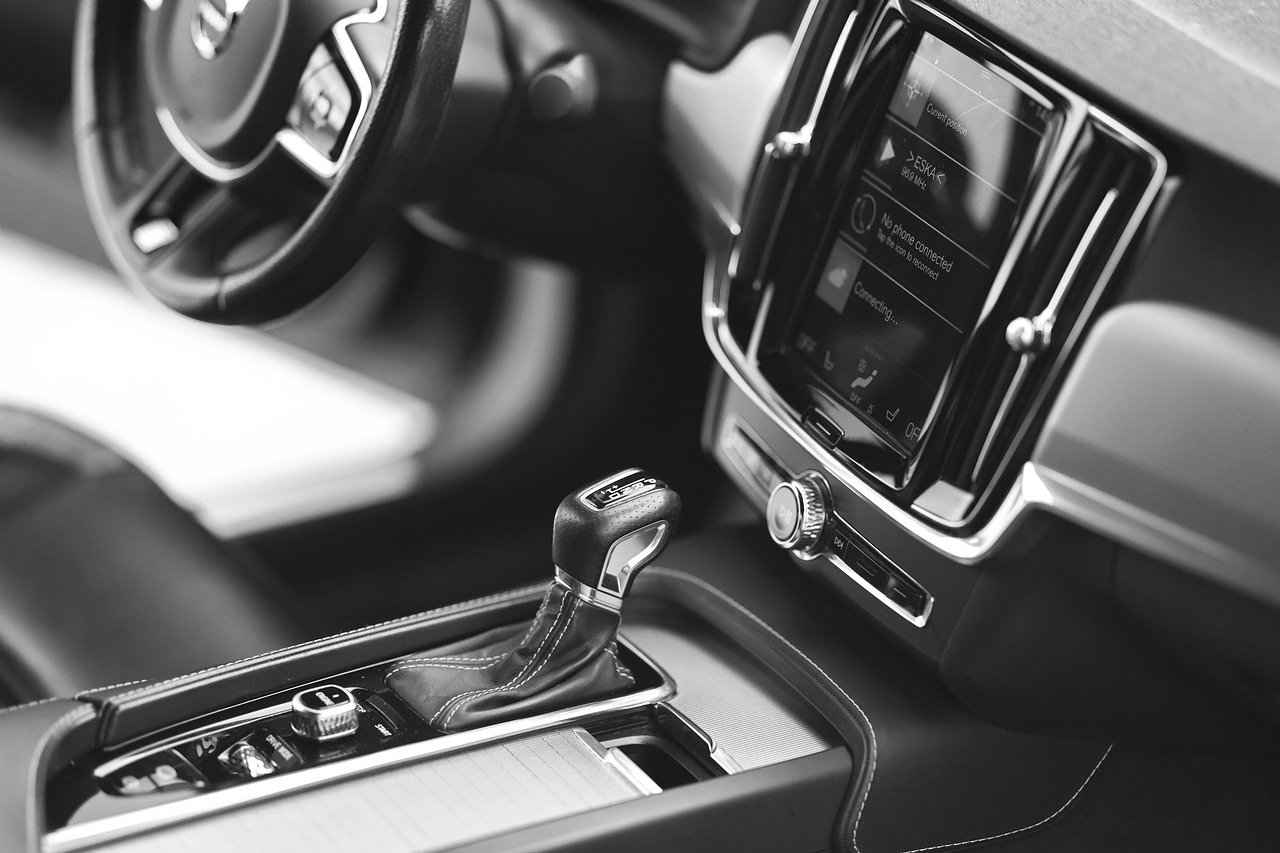This article provides a detailed, step-by-step guide on how to safely and effectively open the hood of a Honda Accord, ensuring you can access the engine compartment with ease.
Understanding the significance of opening your car’s hood is essential for performing regular maintenance checks. It allows you to inspect vital components such as the engine oil, coolant levels, and battery condition. Regular checks can help identify potential issues before they escalate, ensuring your Honda Accord runs smoothly.
Before attempting to open the hood, having the right tools can make the process smoother. Consider having:
- Flashlight: For visibility in low-light conditions.
- Gloves: To protect your hands from grease and dirt.
- Owner’s Manual: For specific instructions related to your model.
Finding the hood release lever is crucial, as it is the first step in opening the hood of your Honda Accord. Typically, the lever is located on the driver’s side, near the footwell or under the dashboard.
Once located, pull the hood release lever firmly. This action will initiate the process of unlocking the hood, allowing you to access the engine compartment. You should hear a slight click indicating that the hood is released.
The hood release lever operates a cable that disengages the hood latch. Understanding this mechanism can be helpful if the hood doesn’t open, as it may indicate a cable issue or latch malfunction.
Sometimes, the hood release may malfunction due to wear and tear. Common issues include:
- Cable fraying or snapping.
- Latch rusting or jamming.
- Improper alignment of the hood.
After pulling the release lever, check for any secondary latches that may still be holding the hood in place. This is an important step to ensure the hood opens safely and without damage.
When lifting the hood, do so gently to prevent damage to the hinges and ensure a smooth operation. The hood should lift easily, allowing for easy access to the engine compartment without excessive force.
If your Honda Accord has a prop rod, knowing how to adjust it properly is essential for keeping the hood open securely while you work. Ensure the rod is firmly placed in the designated slot to avoid any accidents.
Taking safety precautions is vital when working under the hood. Always ensure the engine is off and cool before starting any checks. Additionally, be cautious of moving parts and hot surfaces to avoid injuries.
Once you finish your work, knowing how to close the hood properly is essential to ensure that it is secure. Gently lower the hood and press down until you hear a click, indicating it is locked in place.
If you encounter issues that you cannot resolve, recognizing when to seek professional help can save you time and prevent potential damage to your vehicle. Mechanics can provide expert insights and solutions for more complex problems.

Why is Opening the Hood Important?
When it comes to maintaining your Honda Accord, understanding the significance of opening the hood is crucial. This simple action allows you to perform regular maintenance checks and ensures that vital components of your vehicle are functioning properly. But why exactly is it so important?
- Inspection of Fluid Levels: Regularly checking your engine oil, coolant, brake fluid, and windshield washer fluid can prevent serious issues. Low fluid levels can lead to engine overheating or brake failure.
- Battery Maintenance: Inspecting your battery for corrosion or loose connections can enhance its lifespan. A well-maintained battery is essential for reliable vehicle performance.
- Belts and Hoses Check: Opening the hood allows you to inspect belts and hoses for signs of wear and tear. Replacing them before they fail can save you from costly repairs.
- Engine Condition: A visual inspection of the engine can help you identify leaks, loose wires, or other potential issues before they escalate.
Regular maintenance, including hood inspections, significantly impacts the longevity of your Honda Accord. By addressing minor issues before they develop into major problems, you can enhance your vehicle’s performance and reliability. Furthermore, a well-maintained vehicle retains its value better, making it a wise investment.
When you open the hood of your Honda Accord, focus on the following key areas:
- Fluid Leaks: Look for any signs of leaking fluids under the engine. Common fluids to check include oil, coolant, and transmission fluid.
- Corrosion: Inspect battery terminals and wiring for any signs of corrosion, which can affect performance.
- Belts and Hoses: Check for any cracks, fraying, or looseness in belts and hoses, as these can lead to engine failure.
- Air Filter: A clean air filter is essential for optimal engine performance. Make sure to check and replace it as needed.
It is advisable to open your hood at least once a month for routine checks. However, if you notice any unusual sounds, smells, or performance issues, you should inspect the engine compartment immediately. This proactive approach can help you catch problems early and avoid costly repairs.
If you discover any issues while inspecting your Honda Accord, such as a fluid leak or a worn belt, it’s crucial to address them promptly. Depending on the severity of the issue, you might be able to perform simple fixes yourself, such as topping off fluids or replacing a filter. However, for more complex problems, seeking professional assistance is recommended to ensure your vehicle remains safe and reliable.
In summary, regularly opening the hood of your Honda Accord is not just about accessing the engine; it’s a vital part of vehicle maintenance that can help you avoid serious issues down the road. By being proactive and attentive to your car’s needs, you can ensure a smoother and safer driving experience.

Tools You Might Need
When it comes to maintaining your Honda Accord, having the right tools on hand is essential. This not only facilitates the process of opening the hood but also ensures that you can perform any necessary checks or repairs with efficiency and safety. Below, we explore the tools you might need and their importance in this task.
Using the correct tools allows for a smoother operation when opening the hood. It can also help avoid potential damage to your vehicle. Moreover, having the right equipment means you can address any issues promptly, which is crucial for maintaining your vehicle’s performance.
- Owner’s Manual – Always refer to your owner’s manual for specific instructions related to your model.
- Flashlight – A flashlight can be incredibly helpful if you need to see in low-light conditions.
- Flathead Screwdriver – In case the hood release lever is stuck, a flathead screwdriver can help you pry it open safely.
- Wrench Set – Useful for removing any additional components that may obstruct the hood.
- Safety Gloves – Protect your hands from sharp edges and hot surfaces while working under the hood.
Having these tools at your disposal not only makes the process of opening the hood easier but also ensures that you can handle unexpected situations. For instance, if the hood release cable breaks, a flathead screwdriver can help you access the engine compartment without causing damage.
Before you begin, it’s crucial to prioritize safety. Ensure your vehicle is parked on a level surface, and the engine is turned off and cool. Wearing safety gloves can help protect your hands from any potential hazards.
In addition to the tools mentioned, consider keeping a basic toolkit in your vehicle. This can include items like a socket set, pliers, and a first-aid kit. These tools will not only assist you in opening the hood but can also be invaluable in emergency situations.
Being prepared with the right tools and knowledge can greatly enhance your experience when working on your Honda Accord. It ensures that you can perform necessary maintenance confidently and safely.

Locate the Hood Release Lever
When it comes to maintaining your vehicle, knowing how to open the hood of your Honda Accord is essential. This process begins with locating the hood release lever, which is a crucial first step. Without successfully finding this lever, accessing the engine compartment becomes impossible. In this section, we will explore where to find the hood release lever and why it is important.
The hood release lever is typically found inside the cabin of your Honda Accord, near the driver’s side. Look for it on the lower left side of the dashboard, just above the footwell. It is often marked with a hood icon, making it easier to identify. If you are having trouble locating it, consider checking your vehicle’s owner manual for specific details.
Understanding the significance of the hood release lever cannot be overstated. This lever is designed to unlock the hood by disengaging the latch mechanism, allowing you to lift the hood safely. Without this step, you risk damaging the hood or the latch system, which could lead to costly repairs.
Once you have located the hood release lever, the next step is to pull it firmly. You should hear a click or a pop sound, indicating that the hood has been released. It’s important to apply a steady amount of force, as pulling too hard may cause damage.
The hood release lever operates a cable that connects to the hood latch. This mechanism is designed to be simple, yet effective. If you encounter any issues where the hood does not open after pulling the lever, it may indicate a problem with the cable or latch. Familiarizing yourself with this mechanism can help you troubleshoot potential issues.
- Stuck Lever: If the lever feels stuck, it may be due to debris or rust. Cleaning the area can often resolve this issue.
- Broken Cable: If the cable is damaged, the lever will not function properly, necessitating a replacement.
- Misaligned Latch: Sometimes, the latch can become misaligned, preventing the hood from opening even after the lever is pulled.
After successfully pulling the hood release lever, you may need to check for any additional latches that could be holding the hood down. Many Honda Accord models feature a secondary latch located at the front of the hood. This latch must be disengaged before you can fully lift the hood.
When you are ready to open the hood, do so gently. Lifting the hood too forcefully can damage the hinges or the latch system. If your Honda Accord is equipped with a prop rod, ensure it is properly adjusted to keep the hood securely open while you work.
Always prioritize safety when working under the hood. Ensure the engine is off and cool before you begin. Additionally, wearing gloves and safety glasses can protect you from potential hazards.
In conclusion, locating the hood release lever is the first step in accessing your Honda Accord’s engine compartment. Understanding its function and following the proper steps can make the process seamless and safe.

Pull the Hood Release Lever
When it comes to maintaining your vehicle, knowing how to open the hood of your Honda Accord is a fundamental skill. This process begins with the hood release lever, a crucial component that allows you to access the engine compartment safely.
Once you have successfully located the hood release lever, the next step is to pull it firmly. This action will initiate the unlocking process of the hood, allowing you to lift it and gain access to the engine compartment. The lever is typically located on the driver’s side, near the footwell, making it easily accessible while seated in the driver’s seat.
Understanding the mechanics of the hood release lever is important. When you pull the lever, it operates a cable that disengages the latch holding the hood in place. If the hood does not pop up after pulling the lever, it may indicate a malfunction in the cable or latch mechanism. In such cases, you may need to troubleshoot the issue to avoid any frustration.
Here are some common troubleshooting tips if your hood does not open after pulling the lever:
- Check for Obstructions: Ensure that there are no items blocking the hood from opening.
- Inspect the Cable: The cable may be frayed or disconnected; a visual inspection can help identify any issues.
- Consult the Manual: Refer to your Honda Accord’s owner manual for specific guidance on the hood release mechanism.
After pulling the hood release lever, it’s essential to check for any additional latches that may secure the hood. Many Honda Accord models have a secondary latch located at the front of the hood. This latch is a safety feature designed to prevent the hood from flying open while driving. To release this latch, you will typically need to slide your hand under the hood and push the latch to one side.
Once the secondary latch is released, gently lift the hood. It’s advisable to do this slowly and carefully to prevent any damage to the hinges or the hood itself. If your Honda Accord is equipped with a prop rod, make sure to position it correctly to keep the hood open securely while you work.
Always remember to take safety precautions when working under the hood. Ensure that the engine is cool, and avoid wearing loose clothing that could get caught in moving parts. It’s also wise to have the necessary tools on hand for any maintenance tasks you plan to perform after opening the hood.
By following these steps, you can confidently open the hood of your Honda Accord, allowing you to perform necessary checks and maintenance with ease. Should you encounter any persistent issues with the hood release mechanism, it may be time to seek professional assistance to ensure your vehicle remains in optimal condition.
Understanding the Mechanism
Understanding the mechanism behind your Honda Accord’s hood release is crucial for any car owner. The hood release lever plays a pivotal role in accessing the engine compartment, and knowing how it functions can assist you in troubleshooting issues when the hood doesn’t open as expected.
The hood release lever is typically located inside your vehicle, often near the driver’s seat, beneath the dashboard. This lever is connected to a cable that runs to the hood latch. When you pull the lever, it pulls the cable, which in turn disengages the latch holding the hood closed. This simple mechanism is essential for accessing the engine for maintenance or repairs.
There are several reasons why your hood may not open even after pulling the release lever:
- Cable Issues: The cable may be frayed or broken, preventing it from effectively pulling the latch.
- Latch Problems: The latch itself might be stuck or malfunctioning, which can happen due to rust or debris.
- Improper Pulling: Sometimes, if the lever is not pulled firmly enough, it may not disengage the latch completely.
If you find yourself in a situation where the hood won’t open, here are some troubleshooting steps you can take:
- Check the Release Lever: Ensure that you are pulling the lever firmly and fully.
- Inspect the Cable: If possible, visually inspect the cable for any signs of damage or disconnection.
- Examine the Latch: If you can access it, check the latch for any obstructions or signs of wear.
Knowing how the hood release mechanism functions can save you time and frustration. If you understand that the lever operates a cable that disengages the latch, you can better diagnose issues when they arise. For instance, if you hear a sound when pulling the lever but the hood remains locked, it’s likely a cable issue. This knowledge empowers you to take the right steps toward resolution.
To minimize the risk of encountering hood release problems, consider the following preventive measures:
- Regular Maintenance: Periodically check the condition of the hood release cable and latch.
- Keep the Area Clean: Ensure that the area around the latch is free from dirt and debris that could cause sticking.
- Lubrication: Apply a suitable lubricant to the latch mechanism to prevent rust and ensure smooth operation.
If you have tried troubleshooting and the hood still won’t open, it may be time to consult a professional mechanic. They can diagnose more complex issues that may involve the hood release mechanism or other related components. Seeking help early can prevent further damage and save you money in the long run.
In summary, understanding the mechanism of the hood release lever in your Honda Accord is essential for effective vehicle maintenance. By being aware of how it operates and common issues that may arise, you can ensure that accessing your engine compartment is a hassle-free experience.
Common Issues with the Hood Release
When it comes to maintaining your Honda Accord, being able to open the hood is crucial. However, there are instances when the hood release mechanism may not function as expected. Understanding the common issues associated with the hood release can help you troubleshoot and resolve problems quickly, ensuring you can access the engine compartment without unnecessary delays.
Several factors can contribute to a malfunctioning hood release. Here are some of the most frequently encountered issues:
- Cable Damage: The release cable can wear out over time due to exposure to heat and moisture, leading to fraying or snapping.
- Improper Adjustment: If the cable is not properly adjusted, it may not engage the latch correctly, preventing the hood from opening.
- Corrosion: Rust and corrosion can build up on the latch mechanism, making it difficult to disengage when the release lever is pulled.
- Obstructions: Debris or foreign objects can obstruct the latch, causing it to stick and not release the hood.
- Wear and Tear: Over time, the components of the hood release mechanism may simply wear out, requiring replacement.
Diagnosing issues with the hood release requires a systematic approach:
- Inspect the Release Lever: Check if the lever feels loose or if it requires excessive force to pull. This can indicate a problem with the cable.
- Examine the Cable: Look for visible signs of wear or damage along the length of the cable. If you find any frays or breaks, replacement is necessary.
- Test the Latch: With someone assisting you, pull the release lever while they observe the latch. If it doesn’t move, further investigation is needed.
If you identify a problem with the hood release, here are some steps you can take:
- Lubricate the Latch: Use a penetrating oil to lubricate the latch mechanism, which can help free it up if it’s stuck.
- Adjust the Cable: If the cable is loose, adjusting it may resolve the issue. Refer to your vehicle’s manual for guidance.
- Replace Damaged Parts: If you discover that the cable or latch is damaged, replacing these components is often the best course of action.
If you have tried troubleshooting and still cannot open the hood, it may be time to consult a professional mechanic. They possess the tools and expertise to diagnose more complex issues that may not be immediately apparent. Additionally, if you suspect that the problem lies beyond the hood release mechanism, such as electrical issues or other components, a professional can provide a thorough inspection and repair.
In summary, understanding the common issues with the hood release of your Honda Accord can empower you to address problems swiftly and efficiently. By being proactive and knowing when to seek help, you can ensure that your vehicle remains in optimal condition.

Check for Additional Latches
When it comes to accessing the engine compartment of your Honda Accord, one crucial step is to after pulling the release lever. This process ensures that the hood opens safely and without any complications. Understanding this step is essential for every Honda Accord owner, as it can prevent potential damage to the vehicle and ensure a smooth maintenance experience.
Many vehicles, including the Honda Accord, are equipped with secondary latches designed to keep the hood securely closed while driving. These latches serve as an additional safety measure, preventing the hood from accidentally opening while the vehicle is in motion. Therefore, it is vital to check for these latches to ensure that the hood can be safely lifted after the primary release has been activated.
After pulling the hood release lever, you will typically need to reach under the front edge of the hood to locate the secondary latch. This latch is often positioned in the center or slightly off-center of the hood. It may be a simple lever or a button that you need to press or lift to fully release the hood. Familiarizing yourself with this location can save you time and frustration during your next maintenance task.
- Step 1: Pull the hood release lever inside your vehicle.
- Step 2: Go to the front of the car and locate the secondary latch.
- Step 3: Gently lift the latch while simultaneously raising the hood.
- Step 4: Ensure the hood is held up securely, either by a prop rod or by the hood’s own mechanism.
If you find that the hood still won’t open after pulling the release lever and checking for the secondary latch, there may be an issue with the latch mechanism itself. In such cases, it’s advisable to:
- Inspect the release cable: Ensure it is not damaged or disconnected.
- Check for debris: Sometimes dirt or debris can obstruct the latch.
- Consult the owner’s manual: Your manual may provide specific troubleshooting tips.
Regularly checking the hood’s latch mechanism is essential for the longevity of your vehicle. A well-maintained latch system not only ensures safety but also facilitates easier access to the engine compartment for routine checks such as oil levels, coolant, and other vital fluids. By being proactive, you can avoid potential issues that may arise from neglecting this crucial component.
Being aware of the additional latches on your Honda Accord and knowing how to check and release them properly is a fundamental skill for any car owner. This knowledge not only enhances your ability to perform maintenance tasks but also contributes to the overall safety and reliability of your vehicle. Always prioritize safety and ensure that you are familiar with your car’s mechanisms to make maintenance as smooth as possible.

Open the Hood Gently
Opening the hood of your Honda Accord is a fundamental skill that every car owner should master. It allows for essential maintenance checks and provides access to the engine compartment. One critical aspect of this process is how you . This not only prevents damage to the hinges but also ensures a smooth operation, making it easier for you to access the engine compartment without any hassle.
When lifting the hood, applying gentle pressure is crucial. The hinges of the hood are designed to withstand regular usage, but excessive force can lead to wear and tear. By being cautious, you can prolong the lifespan of the hinges and maintain the overall functionality of the hood. Additionally, a smooth operation means that you can open and close the hood effortlessly, making your maintenance tasks less cumbersome.
- Locate the Hood Release Lever: This lever is typically found inside the car, near the driver’s side. Pulling this lever will release the primary latch.
- Check for Secondary Latches: After pulling the lever, ensure that you check for any secondary latches that may be securing the hood. These are often located at the front of the hood.
- Lift the Hood Carefully: When you lift the hood, do so with a gentle motion. Avoid jerking or pulling too hard, as this can cause damage.
- Use the Prop Rod: If your Honda Accord is equipped with a prop rod, ensure it is adjusted properly to hold the hood securely in place while you work.
Neglecting to open the hood gently can lead to various issues. For instance, damaged hinges can result in misalignment, making it difficult to close the hood properly. This can also lead to safety hazards while driving, as a poorly closed hood may fly open unexpectedly. Furthermore, repeated rough handling can cause the latch mechanism to malfunction, making it challenging to open the hood in the future.
Regular maintenance of the hood mechanism is essential for ensuring its longevity. Here are some tips:
- Lubricate the Hinges: Periodically apply lubricant to the hinges to keep them functioning smoothly.
- Inspect the Latch: Check the latch mechanism for any signs of wear or damage and replace it if necessary.
- Clean the Area: Keep the area around the hood release and hinges clean to prevent dirt from affecting the mechanism.
Opening the hood of your Honda Accord might seem like a simple task, but it requires attention to detail and care. By understanding the importance of gentle handling, you can ensure that your vehicle remains in optimal condition. This practice not only enhances your car maintenance experience but also contributes to the overall safety and functionality of your vehicle.
Adjusting the Hood Prop Rod
When it comes to maintaining your Honda Accord, understanding how to properly adjust the hood prop rod is crucial. This rod plays a vital role in keeping the hood securely open while you work on various tasks under the hood. A well-adjusted prop rod not only ensures safety but also prevents potential damage to your vehicle. In this section, we will explore the importance of the hood prop rod, how to adjust it correctly, and some common mistakes to avoid.
The hood prop rod is designed to support the weight of the hood when it is lifted. Without it, the hood could unexpectedly fall, posing a serious risk of injury. Additionally, a properly positioned prop rod provides clear access to the engine compartment, allowing you to perform maintenance tasks effectively. Understanding its function is essential for any Honda Accord owner.
Adjusting the hood prop rod is a straightforward process. Follow these steps to ensure it is set correctly:
- Open the Hood: First, ensure that the hood is fully lifted and secure.
- Locate the Prop Rod: Find the prop rod, usually located on the side of the engine compartment.
- Remove the Rod: Gently lift the prop rod from its holder.
- Position the Rod: Insert the rod into the designated slot on the underside of the hood. Ensure it is fully engaged.
- Check Stability: Before starting any work, gently shake the hood to confirm that it is stable and secure.
While adjusting the hood prop rod, be mindful of these common mistakes:
- Forgetting to Secure: Always ensure the rod is fully inserted into the slot to prevent accidents.
- Overextending the Rod: Avoid pulling the rod too far, as this can cause damage to both the rod and the hood.
- Neglecting Regular Checks: Make it a habit to check the prop rod’s condition regularly, as wear and tear can affect its performance.
When working under the hood of your Honda Accord, safety should always be a priority. Here are some essential safety tips:
- Wear Protective Gear: Use gloves and safety glasses to protect yourself from sharp edges and potential spills.
- Ensure Vehicle is Off: Always turn off the engine and remove the keys before beginning any work.
- Keep Tools Organized: A clutter-free workspace prevents accidents and makes your work more efficient.
By understanding how to adjust the hood prop rod correctly, you can ensure a safe and efficient working environment while performing maintenance on your Honda Accord. This simple yet crucial step contributes significantly to your overall vehicle upkeep, allowing you to address issues promptly and effectively.
Safety Precautions While Working Under the Hood
When it comes to performing maintenance on your Honda Accord, taking safety precautions while working under the hood is essential. Ensuring your safety not only protects you but also helps maintain the integrity of your vehicle. Here are some important safety measures to consider:
Understanding the importance of safety precautions can prevent injuries and create a secure environment while working on your vehicle. Accidents can happen quickly, and being prepared is key to avoiding them.
- Safety Glasses: Protect your eyes from debris and fluids.
- Gloves: Use gloves to prevent cuts and chemical exposure.
- Closed-Toe Shoes: Ensure your feet are protected from heavy objects.
Before starting any work, make sure your Honda Accord is parked on a flat surface. Engage the parking brake to prevent any accidental movement. This simple step can significantly reduce the risk of injury.
Good visibility is crucial when working under the hood. Utilize work lights or a flashlight to illuminate the engine compartment, allowing you to see clearly and avoid potential hazards.
After driving, components under the hood can be extremely hot. Always allow the engine to cool down before touching any parts. This precaution helps prevent burns and other injuries.
When checking or changing fluids, be cautious. Use a funnel to avoid spills, and always dispose of old fluids properly. Engine oil, coolant, and brake fluid can be hazardous if mishandled.
Having your tools organized can minimize distractions and prevent accidents. Use a toolbox to keep everything in one place, ensuring that you can find what you need quickly without searching through clutter.
If possible, work with a friend or family member. Having someone nearby can provide assistance in case of an emergency and can also help with tasks that require an extra set of hands.
If you encounter a problem that you are unsure how to fix, don’t hesitate to seek professional help. Knowing your limits is essential for maintaining safety and preventing further damage to your vehicle.
By implementing these safety precautions, you can create a safer working environment while maintaining your Honda Accord. Remember, safety should always be your top priority when working under the hood.

Closing the Hood Properly
Closing the hood of your Honda Accord properly is a crucial step that should not be overlooked after performing maintenance or inspections. A securely closed hood is essential for safe driving, as it prevents unexpected openings while the vehicle is in motion, which could lead to dangerous situations. In this section, we will explore the importance of closing the hood correctly, the steps to ensure it is done properly, and some common mistakes to avoid.
Closing the hood properly is vital for several reasons:
- Safety: A hood that is not securely closed can fly open while driving, obstructing your view and leading to accidents.
- Protection: Ensuring the hood is closed protects the engine compartment from debris, water, and other elements that could cause damage.
- Vehicle Integrity: A properly closed hood helps maintain the structural integrity of your vehicle and prevents rattling noises during travel.
To close the hood of your Honda Accord correctly, follow these steps:
- Ensure Everything is Clear: Before closing the hood, double-check that no tools, hands, or other objects are in the way.
- Lower the Hood Gently: Start by lowering the hood to about a foot above the latch. This helps ensure it aligns correctly with the latch mechanism.
- Let it Drop: Once in position, let the hood drop gently to engage the latch. Avoid slamming it down, as this can cause damage.
- Check the Latch: After closing, press down on the hood to ensure it is securely latched. You should hear a click indicating that it is locked in place.
When closing the hood, be mindful of these common mistakes:
- Not Checking the Latch: Failing to check that the latch has engaged can lead to the hood popping open unexpectedly.
- Slamming the Hood: Slamming the hood can misalign the latch and damage the hinges, leading to costly repairs.
- Ignoring Warning Signs: If you notice any unusual noises or if the hood does not seem to close properly, investigate further before driving.
If you encounter difficulties when closing the hood, consider the following:
- Inspect the Latch Mechanism: Ensure that the latch is clean and free from debris. Sometimes, dirt can prevent it from engaging properly.
- Check the Alignment: If the hood appears misaligned, you may need to adjust the hinges or seek professional assistance.
- Consult the Owner’s Manual: Your Honda Accord’s owner’s manual can provide specific instructions and troubleshooting tips.
In conclusion, closing the hood properly is not just a routine task; it is a critical aspect of vehicle maintenance that ensures your safety on the road. By following the outlined steps and being aware of common mistakes, you can enhance your driving experience and prolong the life of your Honda Accord.

When to Seek Professional Help
When it comes to maintaining your Honda Accord, there are various tasks that can be handled with a bit of knowledge and the right tools. However, there are times when you might encounter issues that are beyond your expertise. Recognizing is crucial not only for the health of your vehicle but also for your own safety.
Understanding the limits of your skills is essential. While basic maintenance, such as checking oil levels or replacing air filters, can be done at home, more complex issues like engine problems or electrical failures require professional intervention. Ignoring these problems can lead to serious damage and costly repairs down the line.
- Unusual Noises: If you hear strange sounds like grinding or knocking, it could indicate serious engine issues.
- Warning Lights: Dashboard warning lights are there for a reason. If a light appears, it’s best to have it checked.
- Fluid Leaks: Any signs of leaking fluids under your car should not be ignored, as they may indicate a serious problem.
- Difficulty Starting: If your car struggles to start or won’t start at all, it could be a sign of battery or ignition issues.
Addressing issues promptly can save you from extensive damage. For example, a small oil leak might seem trivial, but if left unchecked, it can lead to engine failure. Seeking professional help at the first sign of trouble can prevent these escalating costs.
When you take your Honda Accord to a mechanic, you can expect a thorough diagnosis of the problem. Professionals use advanced diagnostic tools to pinpoint issues accurately. This not only saves time but also ensures that the correct repairs are made the first time.
Finding a reliable mechanic is essential. Look for reviews and recommendations, and consider mechanics who specialize in Honda vehicles. A good mechanic will communicate clearly about the issues and provide transparent pricing.
While the cost of professional help can be daunting, it’s often a necessary expense. Compare quotes from different service providers, and don’t hesitate to ask for a breakdown of costs. Remember, investing in quality repairs now can save you from more significant expenses later.
Regular maintenance can help you avoid many issues that would require professional help. This includes routine oil changes, tire rotations, and brake inspections. By keeping up with these tasks, you can extend the life of your vehicle and reduce the likelihood of unexpected problems.
In summary, knowing when to seek professional help is vital for the longevity of your Honda Accord. By recognizing the signs of trouble and acting swiftly, you can ensure your vehicle remains in top condition and avoid costly repairs down the line.
Frequently Asked Questions
- How do I find the hood release lever in my Honda Accord?
The hood release lever is typically located on the driver’s side, near the footwell. Look for a small lever with a car icon, usually just above the brake pedal. Give it a gentle pull, and you’ll hear a click indicating the hood is unlocked.
- What should I do if the hood won’t open after pulling the release lever?
If the hood doesn’t pop open, it might be due to a stuck latch. Try pressing down on the hood while pulling the release lever again. If it still won’t budge, you may need to check the cable or latch mechanism for any issues.
- Are there any safety precautions I should take when working under the hood?
Absolutely! Always ensure the engine is off and cool before opening the hood. Use gloves to protect your hands, and avoid wearing loose clothing that could get caught in moving parts. It’s also wise to have a fire extinguisher nearby, just in case.
- How can I properly close the hood of my Honda Accord?
To close the hood, gently lower it to about a foot above the latch, then let it drop. Make sure it latches securely by giving it a gentle push. This ensures it won’t pop open while driving!
- When should I seek professional help regarding my hood or engine issues?
If you encounter persistent problems with the hood release or notice any unusual noises from the engine compartment, it’s best to consult a professional mechanic. They can diagnose and fix issues that might be beyond a DIY fix.



